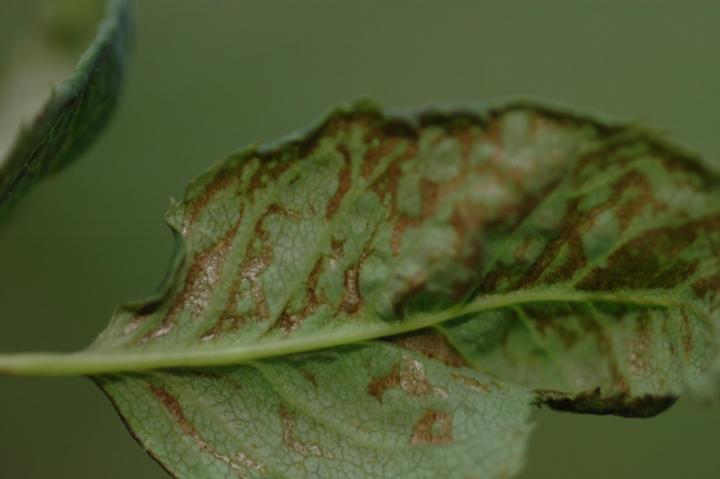THRIPS
HOW TO IDENTIFY AND GET RID OF THRIPS
HOW TO IDENTIFY AND GET RID OF THRIPS

Have you seen thrips damage on your plants? Here are tips for identifying and
getting rid of thrips in your garden.
WHAT ARE THRIPS?
Thrips are tiny insects about as fat as a sewing needle that dine on many plants
worldwide. Also known as thysanoptera or thunderflies, thrips are sucking insects
that can cause some damage to plants. However, their damage can be much worse
when they transmit viruses to plants.
Thrips Life Cycle: The life cycle depends on the species of thrips
as well as the location, host plant, and other factors. Adult thrips overwinter in
plant debris,
bark,
or other materials. They become active in early spring and lay eggs in plant
or other materials. They become active in early spring and lay eggs in plant
tissue. These eggs hatch after 3–5 days, and the nymphs then feed for 1–3 weeks
before resting to molt in 1–2 weeks. Thrips can have up to 15 generations per year
outdoors. Adult thrips live short lives of about one month.
IDENTIFICATION
IDENTIFYING THRIPS
Adult thrips are slender and tiny, at ⅕0- to ½5-inches long. Their colors can be
anywhere from yellow to brown or black, and if you try to get close to them, they
will probably leap or fly away. They have narrow, fringed wings. The nymphs look
like even smaller adults, though they tend to be light green or yellow rather than
darker colors. Their wings are also not fully developed, and they sometimes have
red eyes.
Thrips appear to be tiny dark slivers on your plants. It is hard to see their bodies well without a magnifying glass, but up close, they look a bit like lobsters. Shake them
onto a white background in order to see them well.
THRIPS DAMAGE
Thrips damage includes streaks, silvery speckling, and small white patches. This
happens because the thrips suck plant cells from many garden plants, flowers,
fruits, and shade trees. If you have a major infestation of thrips, your plants might
be stunted with damaged flowers and fruit. The damage that you notice might instead
come from the virus that the thrips spread (usually tomato spotted wilt virus).

CONTROL AND PREVENTION
HOW TO GET RID OF THRIPS
- To keep thrips populations under control, try using yellow or blue sticky traps.
- Shaking branches to remove the thrips and catching them on a cloth underneath is one easy way to quickly remove the thrips from your plants.
- For onion thrips: Take a dark piece of paper into the garden and knock the onion tops against it; if thrips are present, you will spot their tan-colored bodies on the paper.
- A couple of treatments with insecticidal soap kills them. Follow the package directions. Spray the plants twice, three days apart, and the thrips should disappear.
- For fruit trees: Spray dormant oil on the trees.
- As a last resort, dust the undersides of leaves with diatomaceous earth.
HOW TO PREVENT THRIPS
- For flower thrips on gladiolus: Mix 1 tablespoon Lysol household cleaner with 1 gallon water. Soak gladiolus corms in the liquid and plant while still wet to prevent thrips.
- You can plant various flowers to attract beneficial insects that are natural predators to thrips. Some good predators include pirate bugs, lacewings, and lady bugs. Learn more about attracting those predators.
- For onion and western flower thrips, try releasing minute pirate bugs or the predatory mite Amblyseius cucumeris.
- Reflective mulches can help to hide your plants from thrips.
- If there is a very big thrips problem in your area, some plants have resistant varieties.
- Try not to overfertilize plants, as this can lead to more thrips damage.
Do you have more tips for controlling thrips? Let us know below!
Crops and plants AFFECTED
- cotton
- rice
- wheat
- gauvar
- orange
- lemon
- tomato
No comments:
Post a Comment